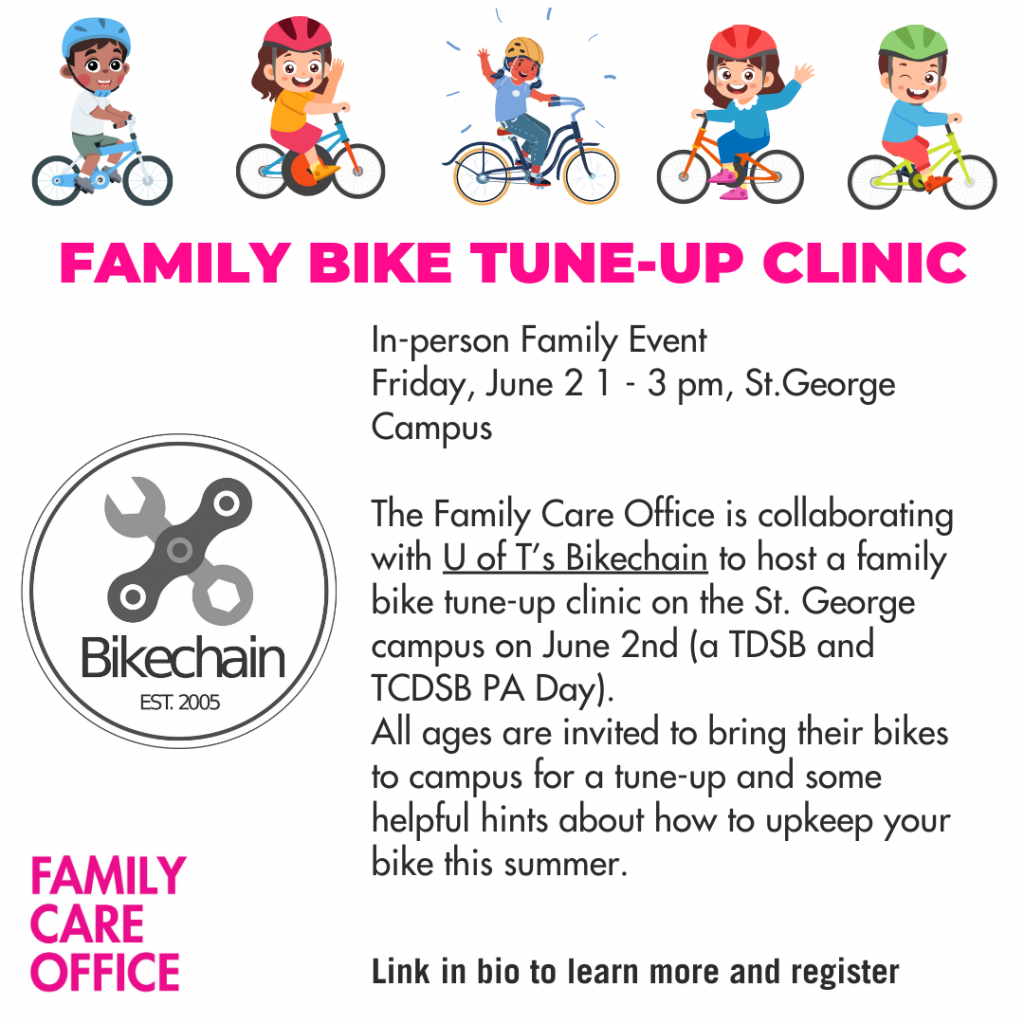(Four-minute read)
By Natasja VanderBerg, Family Care Advisor & Education and Communications Coordinator
I have been biking in Toronto for almost two decades. I have had one accident.
A drunk guy suddenly stepped out from behind a moving truck on Ossington. I tried to swerve. I also hoped he’d step back as I shouted out, but instead he turned towards me and looked like a deer in headlights. I couldn’t avoid him. He went down, I went down. His friends laughed. He did not, but he did get up, thankfully.
With only that one accident, I feel somewhat qualified to talk about biking safely in Toronto. That said, I also know not getting in more accidents is mostly luck, for which I am grateful. I hope I don’t jinx it by writing this.
I have a six-year-old, who I hope enjoys biking in Toronto as much as I do. I really like the kid, so I hope to teach him to ride safely.

Why Biking?
It took me a while to take up biking after I moved to Toronto. The streets are busy, so I stuck to transit and walking. When I got my first bike in Toronto, I (re)discovered the joy of biking, and the efficiency. I bike rather slowly in the city. Even at my slow pace, trips of 7 km or less are most often quicker by bike than TTC or driving a car. And biking is cheap!
Getting your whole family into cycling has the same benefits: joy, efficiency, and affordability.
But risking your own safety while biking is one thing. Having a child has made me think harder about safety, and the importance of teaching bike safety to our kids.
How to Teach Biking Safely?
Teaching bike safety begins when a child is very young. When my kid was in a bike seat and later a ride along, I was particularly careful to model safe biking. To me, biking safely means biking predictability. While some cyclists argue that the road rules don’t make sense for bikes, the whole system of having cars, transit vehicles, bicycles and pedestrians share the same roads depends on all moving parts moving in a predictable manner. Modeling predictability for a kid means following rules of the road, like stopping at stop signs and signaling. Kids really notice signaling when they are behind you. You can even ask them to signal with you from the bike seat or ride along.
There are many blogs about teaching kids to bike, so I won’t go there in detail. I personally tried to teach my kid on grass at first, which was successful to a degree. Then we went to a paved basketball court, and he caught on quickly.
But, once kids are comfortable riding a bike, how do we teach kids to bike safely on the roads, in traffic? There are camps like Pedalheads and Jack of Sports that both teach kids to bike and teach hand signals, shoulder checks and rules of the road. These camps, however, can be expensive. The City of Toronto offers CanBike courses for children and adults!
For those of us adults who need a refresher on hand signals ourselves, check out the City of Toronto’s cycling pages. These pages also provide information on helmets, equipment such as bells and lights, and bike safety.
Bike Safety
Speaking about bike safety, CycleTO has outlined simple steps to check your bike’s safety for the road. Check out their ABC Safety Check and be sure to do the check on your kids bike too.
The University of Toronto itself has a volunteer-run, non-profit bike shop called Bikechain. You can pop by 230 College Street any time to ask for a quick safety check of your bike and your family members’ bikes. The Family Care Office will be hosting a bike clinic with them this Friday, June 2nd. Bring by your family’s bikes and learn to do a safety check and small repairs yourself! Register for the Family Bike Tune-up Clinic now.